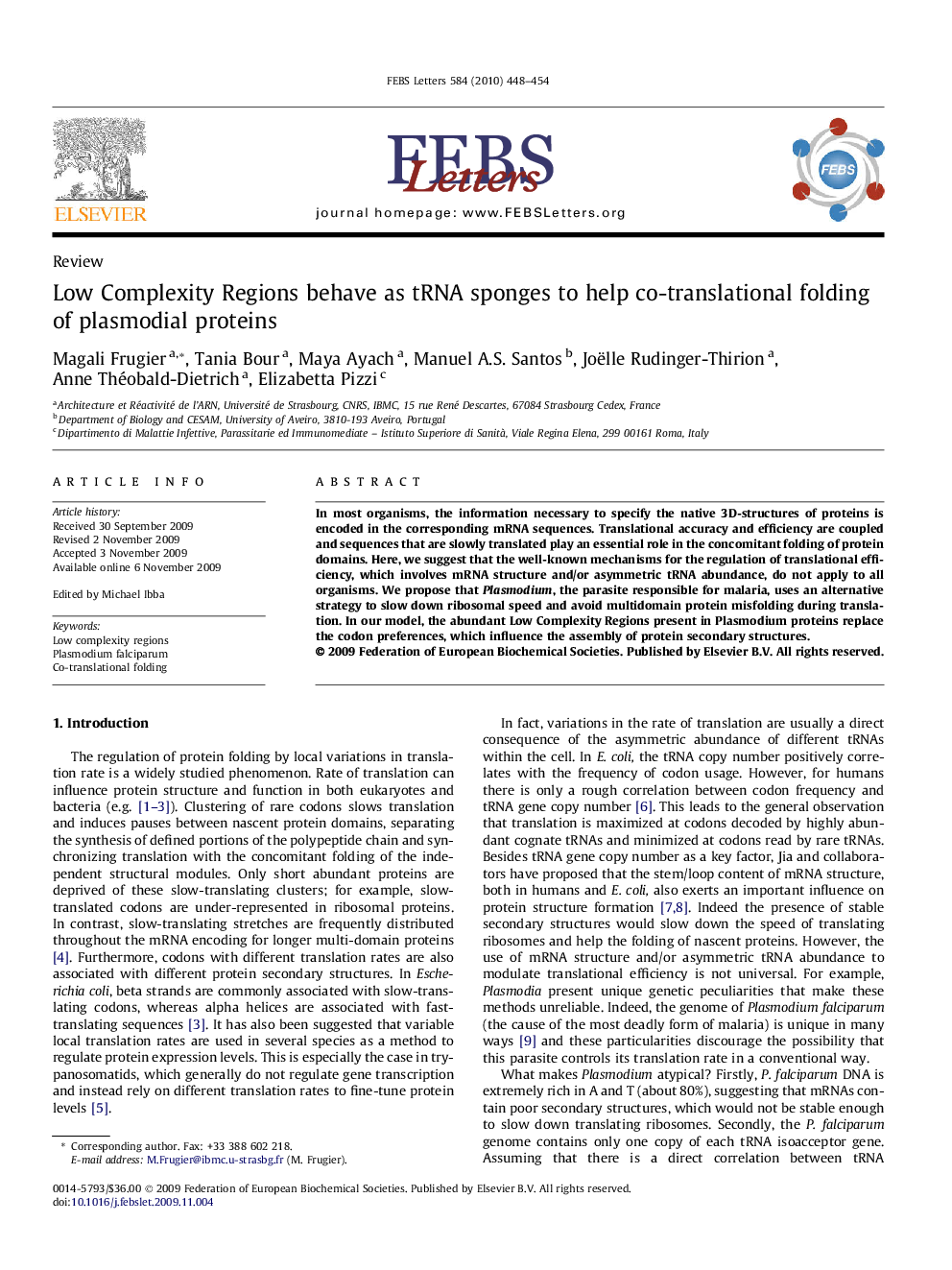| Article ID | Journal | Published Year | Pages | File Type |
|---|---|---|---|---|
| 2048768 | FEBS Letters | 2010 | 7 Pages |
In most organisms, the information necessary to specify the native 3D-structures of proteins is encoded in the corresponding mRNA sequences. Translational accuracy and efficiency are coupled and sequences that are slowly translated play an essential role in the concomitant folding of protein domains. Here, we suggest that the well-known mechanisms for the regulation of translational efficiency, which involves mRNA structure and/or asymmetric tRNA abundance, do not apply to all organisms. We propose that Plasmodium, the parasite responsible for malaria, uses an alternative strategy to slow down ribosomal speed and avoid multidomain protein misfolding during translation. In our model, the abundant Low Complexity Regions present in Plasmodium proteins replace the codon preferences, which influence the assembly of protein secondary structures.
